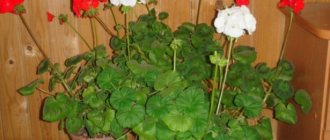The cinquefoil genus is characterized by a wide variety of species (from low-growing herbs to stately shrubs), but planting and care in open ground for these plants are similar, because they are all unpretentious to grow. We'll tell you what to look for.
Only white cinquefoil (it grows well only in the shade), shiny cinquefoil (grows well in dry sandy soil on the south side of the site) and arctic cinquefoil (needs acidic soil) are particularly picky. Other types of cinquefoil prefer well-lit places where there is shadow in the afternoon (for example, from other plants). The soil should ideally be loose, slightly acidic, nutritious, well drained and with a small amount of lime.
Description of Nepalese cinquefoil
Cinquefoil Nepali grows naturally in Nepal and the Western Himalayas. The shrub reaches a height of about 50 cm. The leaves of the plant are large, palmate, and similar in appearance to strawberry leaves.
Cinquefoil can decorate any flowerbed
The inflorescences of the cinquefoil are paniculate and consist of small pink flowers. The plant blooms in the second year after planting. The flowering period lasts 2-2.5 months.
Nepalese cinquefoil has become the basis for hybrid varieties:
- Floris;
- Miss Wilmont;
- Roxana;
- Legend;
- Fiery flame.
"Pink Queen"
The unique pink queen of garden flower beds is a low bush with creeping branches. It is unusually hardy, tolerates pruning wonderfully, maintaining its compactness and original appearance for a long time. The shrubby cinquefoil “Pink Queen” is characterized by a dense cushion-shaped crown. It is formed from feathery leaves consisting of 5 or 7 oval parts. In summer they are light green, in autumn they are golden. Pink buds appear in early June and bloom profusely until the end of September. Another name for this species is the “Princess” shrubby cinquefoil.
Features of planting
Cinquefoil Abbotswood - description and care
The plant is completely undemanding to growing conditions. When growing a crop for good development and abundant flowering, you need to choose a suitable place.
For Nepalese cinquefoil, it is better to choose an open, well-lit area. Planting in partial shade is acceptable, but the lack of sunlight will certainly affect the appearance of the plant, especially the quality of its flowering.
Potentilla has small, richly colored flowers
The process of planting Nepalese cinquefoil is as follows:
- Dig a planting hole about 50-60 cm deep.
- Drainage material must be added to the bottom. It can be gravel, coarse sand, brick chips.
- The next layer is a mixture of soil, humus and sand.
- A seedling is planted and covered with soil.
- Water the planted plant. It must also be carried out within 2-3 weeks after planting, preventing the soil from drying out.
It is important to know! Nepalese cinquefoil prefers loose soils with a high lime content. The best option is loam or sandy loam.
Planting from seeds
Propagating cinquefoil by seed gives good results. Seed material is sown either for seedlings or immediately in a permanent place of growth. To plant seedlings, small seeds are carefully placed in a prepared substrate, covered with film or glass, placed in a warm place and periodically moistened. It is recommended to plant at the end of winter - at the beginning of spring.
Planting seedlings in open ground
When the young plants are strong enough, they are planted in a flower bed. It is advisable to do this, as well as plant seeds in open ground, no earlier than the end of spring, when the ground has warmed up and the threat of night frosts has passed.
The plant blooms from early summer until the first frost
Cinquefoil: planting and care in open ground, growing from seeds
Cinquefoil (Potentilla) is a beautiful and delicate flower from the Rosaceae family. This plant can be either herbaceous or shrubby. Shrubby cinquefoil is popularly called cinquefoil or Kuril tea.
Some varieties of cinquefoil have medicinal properties, but more often this plant is more often used to create interesting landscape designs. Cinquefoil is great for decorating borders, alpine hills or hedges.
It is very popular among gardeners due to its simultaneous combination of unpretentiousness and extraordinary beauty.
Cinquefoil can be either a perennial plant or subshrub, or an annual or biennial plant. Stems can be erect, widened, erect, and less often creeping. The leaves are multipartite, pinnate, and have a bright green or gray-green color.
Shrub cinquefoil can grow up to one and a half meters in height and up to 1 m in width. The flowers are collected in inflorescences of a false-umbellate or thyroid-paniculate shape. Flowers can be white, red, golden yellow, orange, pink and cream.
Flowering of cinquefoil begins in May and continues until September. The fruit is collected from many bare or hairy achenes.
Growing cinquefoil from seeds
It is necessary to plant cinquefoil seedlings in late February-early March. Containers with planted seeds must be covered with film and placed in a room where the temperature is 15-18 degrees. After the seedlings sprout, the polyethylene must be removed.
When the seedlings have formed two true leaves, they must be transplanted into peat pots. The seedlings grow quite slowly, but despite this they must be planted in a flowerbed at the end of August. A plant grown in this way will bloom only after a year.
Further, the cinquefoil will be able to reproduce by self-seeding.
Planting herbaceous cinquefoil
In autumn, cinquefoil seeds can be planted once in open ground. During the winter cold, the seeds will undergo natural certification, and only the strongest and strongest will sprout.
You can also plant seeds in open ground in the spring, but it is better to grow seedlings first.
Since this option is more reliable, most seeds will germinate and will not be damaged by any insects at such a young age.
Shrub cinquefoil seedlings must be planted in open ground in early spring in holes that should be twice the size of the root system of the seedling. The distance between gall seedlings should be at least thirty centimeters. A layer of lime gravel must be poured into the holes for planting seedlings in order to make it well drained.
Then you need to mix humus, leaf soil, sand, complex mineral fertilizer and pour the resulting mixture into the pits in a thick layer. Then place the seedling there and sprinkle it thoroughly with garden soil, compact it and water it generously. Within a month, shrubby cinquefoil requires abundant and regular watering.
In order for moisture to remain in the soil longer, it must be mulched with sawdust, bark or straw.
Location
Most types of cinquefoil are unpretentious and do not require special care, but there are also those that are more fastidious and require careful care. These varieties include white cinquefoil (likes to grow in the shade or at least partial shade), brilliant cinquefoil (prefers dry sandy soil). All other types of cinquefoil prefer to grow in light areas that are shaded at midday.
The soil
The soil should be well-drained, loose, slightly acidic and nutritious, with a low lime content. An exception is the Arctic cinquefoil, which requires acidic soil to grow.
Watering
Caring for shrub and herbaceous cinquefoil is quite simple. Frequent and abundant watering for cinquefoil is necessary only in the first month after planting, then it must be reduced to once every two weeks. If the soil was not mulched during planting, then after each watering it is necessary to loosen the soil and remove weeds.
Feeding and fertilizers
Fertilizers need to be applied three times per season. The first feeding is in May, the second in June and the third at the end of August. You can also spray the cinquefoil with water in the evening, the plant will respond positively to this.
For normal growth and development of cinquefoil in spring, it is necessary to carry out pruning. This will give the plant a neat appearance.
During such pruning, you need to remove all dry and damaged branches, as well as those that prevent other branches from growing or growing inside the bush.
For older bushes, it is necessary to carry out anti-aging pruning; for this, most of the old and non-flowering branches should be removed, leaving young shoots.
Cinquefoil after flowering
After the flowering of the annual cinquefoil ends, it must be removed from the site and the soil must be dug up. Shrubby cinquefoil must be trimmed and treated with Bordeaux mixture.
Adult plants do not need additional shelter for the winter, as they have a high level of frost resistance. But cuttings and young seedlings must be covered with a layer of mulch and covering material.
Potentilla propagation
Cinquefoil propagates not only by seeds, but also by dividing the bush, cuttings and layering.
Dividing the bush should be done in autumn or spring. Propagate by layering and cuttings in the second half of summer.
Potentilla can be propagated by vegetative methods only when the plant is more than four years old.
It is necessary to divide the bush into parts using sterile and sharp objects so that each has at least two living buds. Then the cuttings need to be treated with a root growth stimulator and planted in the soil.
Cuttings need to be cut from strong shoots. Their length should be 10 cm. Cut cuttings should be germinated in a warm room for a month, then planted in open ground and well covered.
In order to propagate cinquefoil by layering, you need to cut a strong shoot and sprinkle it with soil. Before autumn, the cuttings will take root and can be replanted.
Diseases and pests
If you follow all the rules for caring for cinquefoil, then you will have to fight harmful insects and diseases. But there are also cases when cinquefoil can be affected by rust, spotting and powdery mildew.
If signs of the disease appear on the plant, it must be treated with special means as soon as possible.
Of the pests, only cutworms attack cinquefoil, but they can be easily dealt with by simply spraying the plant with special insecticides.
Medicinal properties of cinquefoil
Only white, erect and goose cinquefoil have healing properties. Cinquefoil stimulates the central nervous system and enhances kidney filtration. Used to treat dysentery and diseases of the gastrointestinal tract, as well as to treat diseases of the liver and pancreas.
Potentilla contains many useful substances that help fight gynecological diseases and inflammation of the oral cavity. To do this, prepare a decoction of cinquefoil, rinse or douche.
An infusion of cinquefoil stems helps fight hepatitis and cirrhosis of the liver, increases bilirubin and relieves swelling.
But cinquefoil also has contraindications - cinquefoil is prohibited for people with increased blood clotting and hypotensive people.
Types and varieties of cinquefoil
There are a huge number of types and varieties of cinquefoil. More popular types and varieties will be described in more detail below.
Cinquefoil (Potentilla apennina) is a perennial plant with pubescent leaves of a trifoliate shape and a silvery hue. The flowers are pink or white.
White cinquefoil (Potentilla alba) is a perennial plant that grows up to twenty centimeters in height. The basal leaves are palmate-lobed. The flowers are white, collected in umbellate or racemose inflorescences.
Potentilla anserina (Potentilla anserina) - leaves are pinnately compound, yellow flowers up to 2 cm in diameter.
Nepalese cinquefoil (Potentilla nepalensis) is a perennial that can grow up to 50 cm. The stems are straight and branched, have a purple tint. The leaves are palmate-lobed and dark green in color. The flowers are quite large, red or pale pink. Flowering begins in July and lasts for 2 months.
The most popular varieties of this species: Roxana, Floris, Miss Wilmott.
Cinquefoil erecta, or straight, or galangal (Potentilla erecta) is a perennial that can grow up to 20 cm. The stem is erect and branched. The leaves are trifoliate. Single flowers. Flowering begins in July and lasts until autumn.
Silver cinquefoil (Potentilla argentea) is a perennial plant with arched stems. Grows up to 30 cm. The leaves are scaly and five-separated, covered with white hairs on the back side. The flowers are collected in thyroid-paniculate inflorescences. Flowering lasts from June to July.
Hybrid cinquefoil (Potentilla x hybrida) - this species includes many garden hybrid forms of the plant. The stems are straight and highly branched at the top. They grow up to 1 m in height. The leaves are trifoliate or serrate in shape. Velvety flowers of red, yellow, purple or pink
The most popular varieties: Master Floris, Vulcan, Yellow Queen.
Cinquefoil: how to grow correctly (video)
Source: https://flowertimes.ru/lapchatka/
How to care for Nepalese cinquefoil
Cinquefoil Goldfinger - description, planting and care
For good development and long flowering when caring for Nepalese cinquefoil, you must adhere to the following basic conditions:
- Watering. Mature plants do not need constant watering. In dry times, it is enough to keep the soil slightly moist. Mulching the soil can help with this. When watering, it is better to use heated water, since the roots of the plant are sensitive to temperature changes.
- Feeding. The plant needs feeding three times per season: in early spring, during the formation of buds and at the end of summer. It is advisable to use a complex mineral fertilizer with a predominance of nitrogen (at the beginning of the season) and potassium with phosphorus during subsequent procedures.
- Loosening. You need to make sure that there are no weeds growing in the flowerbed where the cinquefoil grows. To do this, they are regularly weeded, and the soil around the plants is loosened shallowly. This procedure helps saturate the soil with oxygen.
- Trimming. Nepalese cinquefoil bushes are prone to overgrowth, so periodically they need to undergo formative pruning. You can give the plantings any shape. Anti-aging pruning is carried out once every 4-5 years - in the spring the plant is cut off completely and be sure to fertilize it. Over the next season it rejuvenates.
Potentilla seeds give good germination
Grow scarlet cinquefoil by seeds – Cottage, garden, vegetable garden, indoor plants
Cinquefoil (otherwise known as Kuril tea ) is a perennial shrub plant.
It has been cultivated for a very long time and is grown as an ornamental.
And in recent years, cinquefoil has become widespread as a useful remedy in traditional medicine recipes .
Many varieties of shrubs are cold-resistant and unpretentious in care. Try growing it on your own plot – it’s an excellent option when decorating your garden.
Popular varieties of cinquefoil: which one is better?
Many varieties of cinquefoil have already been bred - over 500. Each of them is distinguished by its resistance to external conditions, planting and flowering times, the size and shade of the inflorescences, and the height of the stems.
Gardeners can choose from the following popular types in landscape design:
• Altai cinquefoil . The plant grows up to 35 cm in length, which makes it possible to use it when decorating rockeries and rock gardens. Flowers are up to 15 mm in diameter, collected in inflorescences.
• Cinquefoil shiny . A beautiful shrub with soft pink flowers and silver-green leaves. It is very light-loving and loves frequent soil moisture. Designers use it on alpine slides.
• Cinquefoil stemless . The lowest representative of the entire family - it grows only 6 cm in length. During the flowering period, miniature herbaceous bushes form inflorescences with a diameter of up to 17 mm.
• Nepalese cinquefoil . Representatives of this species are famous for their long flowering time - up to 55 days. Rich red or dark pink flowers will brighten any garden. Hybrids of Nepalese cinquefoil have been bred - Floris, Miss Wilmott, Roxana.
• Cinquefoil is dark red-bloody . The height of the plant is up to 60 cm. It begins to bloom early - already in June. Inflorescences are up to 5 cm in diameter, scarlet in color. A beautiful variety of dark blood red cinquefoil - Gibson's Scarlet.
• Hybrid cinquefoil . The shrub, if the rules of care are followed, can reach a height of up to 90 cm. The shades of the inflorescences of the bred varieties of the plant are striking - yellow, purple, pink, bright red. Popular decorative varieties of hybrid cinquefoil are Plena, Vulcan, Master Floris, Yellow Queen.
• Cinquefoil Apennine . This is a perennial that grows up to only 15 cm in length. It is usually planted on rocky rock gardens.
• Arctic cinquefoil . Representatives of the species tolerate cold well, but excellent growth rates occur only in illuminated areas. The flowers are deep yellow. The leaves are dark green with a light edge.
• White bloodroot . The plant stretches up to 25 cm in length. Under favorable conditions, it begins to bloom early - already in mid-May. Snow-white inflorescences up to 3 cm in diameter bloom on the stems. White cinquefoil is unpretentious in care and winters well.
• Cinquefoil anseri . An unpretentious plant with yellow inflorescences - it can actively bloom even in areas with unfavorable environmental conditions. A shaded place will suit the shrub.
Each type of cinquefoil forms a dense leafy crown and tolerates decorative pruning well. You can choose any of the varieties.
Which area to choose for planting cinquefoil?
Despite the fact that cinquefoil is considered a non-capricious plant, give it the right place! If all conditions are met, the plant can bloom until the onset of cold weather.
The area for active growth of shrubs should be:
• with fertile soil (but loams may also be suitable),
• with moderate humus content in the soil,
• well lit,
• with a pH level of 7-8.5
• protected from northern winds,
• well drained.
The level of lighting is especially important, since not all varieties of cinquefoil grow well in the shade. Due to the lack of sunlight, the leaves and inflorescences become less brightly colored.
Have you already decided where you will grow cinquefoil in the future? You can begin preparing the soil for planting.
To do this, you will need to carry out a number of agrotechnical measures:
• Dig up the area and remove all weeds.
• Prepare planting holes 40-60 cm deep. Place a layer of gravel at the bottom for better drainage.
It also doesn’t hurt to add a mixture of sand with humus and 100 g of lime or wood ash to the hole so that the seedlings take root better in the new place.
The distance between the holes will depend on the plant variety chosen. To create hedges, maintain a distance of 50-70 cm between individual specimens.
When the planting holes are ready, you can begin planting cinquefoil using one of the possible methods.
Methods for planting cinquefoil on the site
The most popular methods of planting cinquefoil are seeds and ready-made seedlings. Both options are simple and do not require special skills from the gardener. Which to choose?
Please note - not all plant varieties reproduce well by seed! For example, white cinquefoil is planted only as seedlings. Another problem associated with seed planting is that it is quite difficult to obtain the material itself.
It’s great if you get seeds from friends who collected them from their own plant. But it is not a fact that all the rules were followed - perhaps the plant will never sprout.
In addition, you will be able to see beautiful flowering no sooner than after 2 seasons.
The landing rules, in this case, are as follows:
• Carry out planting work in spring or summer, when the temperature outside is warm.
• Place the seeds, pre-soaked for a day in water, into a planting hole no more than 2 cm deep. There is another way - simply spread the seeds over the surface of the soil, pressing them slightly into the soil with your finger.
• The seeds are small, so do not cover them with a thick layer of soil.
• Moisten the area thoroughly.
• After 2-3 weeks, when small sprouts appear above the ground, plant them at the required distance and begin caring for the plantings.
(Adulted cinquefoil seedlings)
Planting cinquefoil seedlings is much more convenient! But when buying planting material, pay attention to its quality - traces of diseases and pests on the foliage are not allowed.
(Cinquefoil seedling)
This technique is simpler - you do not need to prepare planting material in advance and wait several years for flowering. Beginner gardeners should choose this agricultural technology.
Plant the bush like this:
• Treat the roots with a special compound for better rooting.
• Place the seedling so that its root collar is at ground level.
• Water the soil and sprinkle some pine needles or sawdust around the seedlings as mulch.
Rules for caring for cinquefoil
For experienced gardeners, cinquefoil grows for 10-15 years. This unpretentious plant gives a good increase in green mass over the season, which ensures rapid greening of the area - this especially applies to species with pale colored inflorescences.
The rules of care are simple:
• Watering . Water the cinquefoil infrequently - 1-2 times a month is enough. If the summer is hot, make sure that the soil around the bush does not dry out too much.
Only young seedlings need frequent watering - moisten the soil once a week. Do not use cold water - it can destroy the roots of the plant! The average watering rate is 1-1.5 buckets for each specimen.
To prevent moisture from evaporating quickly, regularly update the mulch layer under the plantings.
• Feeding . At the beginning of spring, mineral fertilizers (100-150 g) are applied under the bush - buy a special complex suitable for ornamental plants. Just before flowering, feed the cinquefoil with potassium and phosphorus - this will contribute to the durability of the buds and their brighter color. Closer to autumn, fertilize the flowerbed again with minerals.
• Loosening and weeding . Do not loosen the plantings deeply, since the root system of the cinquefoil is located close to the soil surface! Careless actions will lead to damage to the roots, so do not dig the soil deeper than 7 cm. Make sure that the flowerbed is not overgrown with weeds by regularly removing the growth from here. Mulch with a layer of 5 cm significantly reduces the growth of weeds.
• Trimming . Throughout the season, remove faded inflorescences and dried leaves from the branches - this way you will prolong flowering for a long time. During the season you need to carry out 2 decorative “haircuts” of the bush. If this is not done, the stems will grow greatly - there will be no decorative appearance. Remove from plants all damaged branches and stems directed towards the middle of the bush.
The crown can be given the most bizarre shape - a square, a circle, animal figures. Anti-aging pruning is carried out every 5 years in mid-April - the bush is cut almost to the very base. This way the plant is completely “renewed” - expect abundant flowering next season.
Before anti-aging pruning, do not forget to feed the plant with mineral or complex fertilizers.
Cinquefoil tolerates winter cold well . Moreover, its frost resistance only increases over the years. Therefore, in southern and temperate climates, the plant does not need to be additionally covered for the winter. Only in the north, in order to prevent the shoots from dying off, can care be taken to protect the bush. Bend the branches to the ground (you don’t have to do this) and cover them with polyethylene or non-woven material.
(One of the ways to cover cinquefoil)
To prevent gusts of wind from lifting such a “cloak,” secure the edges of the material with stones or stakes. According to the observations of experienced gardeners, all varieties with pink or red inflorescences necessarily require light winter shelter.
Methods for propagating cinquefoil
When you become a real pro in growing cinquefoil, you can expand the planting area. Now it is not necessary to buy seedlings from nurseries - for propagation, use those plants that are actively blooming in your flowerbed.
Gardeners propagate cinquefoil in several ways:
Source: https://rm-agro.com/lapchatka-alaya-vyrastit-semenami/
Reproduction methods
Why cinquefoil does not bloom - what to feed
Nepalese cinquefoil is an unpretentious plant in terms of care and propagation. There are several ways to grow it on your plot or dacha:
- Growing from seeds. It is quite possible to prepare the seed material yourself. Ripe seeds are collected in late summer - early autumn. They can be planted immediately as seedlings or stored in a dry place until spring. Seed germination lasts 2.5-3 years.
- Using cuttings. At the beginning of summer, healthy, strong shoots are cut from last year's stems and the lower leaves are removed from them. Some of the resulting seedlings are treated with a solution to stimulate root growth and planted in pots with substrate. To quickly root, it is better for the plant to create greenhouse conditions by covering it with film, a jar or a plastic bottle. Periodically, the seedling needs to be irrigated. After it takes root and strengthens, you can plant it in open ground as an independent plant.
- By division method. This method is suitable for plants that are at least 4 years old. In spring or autumn, in warm weather, a healthy shoot is selected, carefully separated from the mother bush and planted as an independent plant.
- By layering. This method is used most often because it is the easiest to perform. The cinquefoil shoot is cut, bent to the ground and secured with a special pin. Near the cut, the shoot is sprinkled with soil. After the buried shoot forms a normal root system, it can be disconnected from the parent plant and planted separately.
Trimming
To prevent the bushes from being loose and untidy and to maintain their decorative appearance, one-time spring and/or autumn pruning is recommended. All crooked and inward growing branches, frostbitten, broken and dry shoots are removed. In the spring, young shoots are shortened by 1/3, and in the fall, stems that are too elongated are cut off. Pruning has both sanitary and decorative purposes; the cinquefoil can be given the desired shape, usually a ball or pillow. Once every 5 years, radical pruning is done in order to rejuvenate the specimen, each time removing about a third of the old branches.
If the plant is grown as a hedge, the shoots can be pruned at any time during the warm season as they grow.
Possible diseases and pests
In general, the crop exhibits good resistance to diseases and pests. And cases of plant damage by certain diseases are a consequence of violation of the rules of caring for it.
The development of rust in cinquefoil is associated with excess moisture in the soil. When it appears, the plant will have to be treated with Bordeaux mixture or fungicides.
Among the pests, the cutworm, which feeds on flowers and leaves, is most capable of annoying the cinquefoil. Lack of timely treatment can lead to the death of the plant. To get rid of the cutworm, the bushes need to be treated twice with an insecticide solution.
Cinquefoil is widely used in folk medicine
Use in landscape design
Cinquefoil Miss Wilmont is used by modern landscape designers in both single and group plantings. Single plants are most often represented by plantings near borders, on empty ground under tall bushes with bare stems.
Complex compositions of cinquefoil with lupins, cornflowers, as well as plants that are distinguished by inexpressive flowering also look impressive in flower beds. The Legend cinquefoil is often found on alpine hills and among stones.
Cinquefoil Miss Willmott - one of the most colorful hybrids
Beneficial features
Due to the rich content of essential oils and vitamin C, the plant is used in folk medicine, especially for colds.
Cinquefoil Nepali, which is a shrubby perennial plant, is often used for growing at home in the garden. She will need a well-lit place and feeding at the end of the season. In return, the plant will reward you with long-term flowering of abundant flowers of bright colors. Nepalese cinquefoil Miss Wilmont looks especially elegant.
Due to its healing properties, the plant is used in folk medicine for various diseases, especially colds. And even an inexperienced gardener can grow cinquefoil.
Soil requirements
It does well on calcareous soils, but does not tolerate too dense soils and has high requirements for aeration. The planting site must be well drained.
The choice of location is determined by the selected variety, among which there are species that are unpretentious to growing conditions and those that are very capricious. For example, shiny cinquefoil loves open places and a predominance of dry sand in the soil, while white cinquefoil feels better in partial shade.











